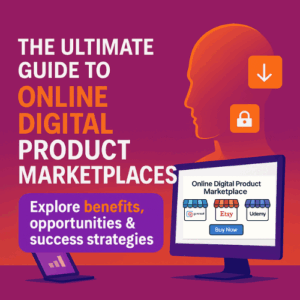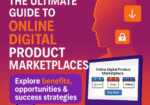Introduction: Why Digital Product Marketplaces Are Booming The digital economy has changed the game for anyone who makes, buys, or sells goods. Today a growing number of transactions revolve around files, memberships, licenses, and instant downloads rather than physical stock. An eBook, a planner PDF, an online course about starting a small business, or a custom website template is just a click away, and that availability keeps multiplying. How did things move so fast? A mix of faster wires, the entrepreneurial itch, and evolving buyer habits pushed us here. Over the past twenty years higher speeds and wider access opened a new lane of commerce. That lane was never meant to simply shift brick-and-mortar shops online; its purpose was to invent value that exists only in pixels and code, safely stored in the cloud. Creators finally saw that they did not need big budgets, spare rooms full of boxes, or even a full e-commerce site to start selling. Marketplaces such as Etsy, Gumroad, Creative Market, and Udemy let artists, designers, developers, and teachers reach a global crowd with just a file upload. And today? We’re seeing a creator economy that is thriving on low overhead, instant scalability, and recurring revenue. You can make a lot of money if you understand how digital product marketplaces work, regardless of your experience or whether you’re a first-time side hustler. Let’s break it all down. The Rise of Digital Products To fully appreciate the significance of online digital product marketplaces, we need to look at the evolution of digital goods themselves. In the early 2000s, digital products were mostly confined to software, stock photos, and eBooks — items typically reserved for niche tech users, photographers, or marketers. Platforms like Amazon revolutionized the sale of eBooks with the launch of Kindle, while Adobe and Microsoft transitioned their software into downloadable formats. Then came the explosion of online learning. Platforms like Udemy, Coursera, and Skillshare empowered individuals to turn their skills into passive income streams by packaging knowledge into structured courses. This gave rise to a new kind of digital entrepreneur: the course creator. Over time, this landscape expanded even further. Today, digital products span dozens of categories: Digital planners and productivity tools Website templates and code snippets Printables, fonts, icons, and stock illustrations Membership sites and gated communities SaaS subscriptions, mobile apps, and digital services Why the rise? It’s not just the sellers who love digital products. Buyers do too. Consumers are now more comfortable with instant, virtual solutions — and in many cases, prefer them. Think about it: downloading a financial budgeting spreadsheet takes 30 seconds. Waiting for a hardcover workbook to arrive takes a week. The faster the world moves, the more we value convenience. But the real kicker? Digital products are infinitely scalable. You can create a product once and sell it 1,000 times without re-manufacturing, storing, or shipping anything. This kind of leverage has turned thousands of creators into full-time entrepreneurs — and millions of buyers into repeat customers. As we go deeper into this guide, we’ll explore how these products are sold, what makes certain marketplaces more lucrative than others, and what you can do to succeed as either a seller or buyer in the thriving digital economy. What is an Online Digital Product Marketplace? An online digital product marketplace is a platform where creators can list and sell digital goods directly to buyers. These are intangible, downloadable, or access-based products — meaning there’s no physical delivery involved. Everything happens online: the listing, the purchase, the download, and often even the consumption (like online courses). These platforms handle key technical functions that many creators would otherwise need to build manually: Hosting files or content Handling secure payments Delivering downloads automatically Offering customer service infrastructure Sometimes even marketing and SEO exposure

